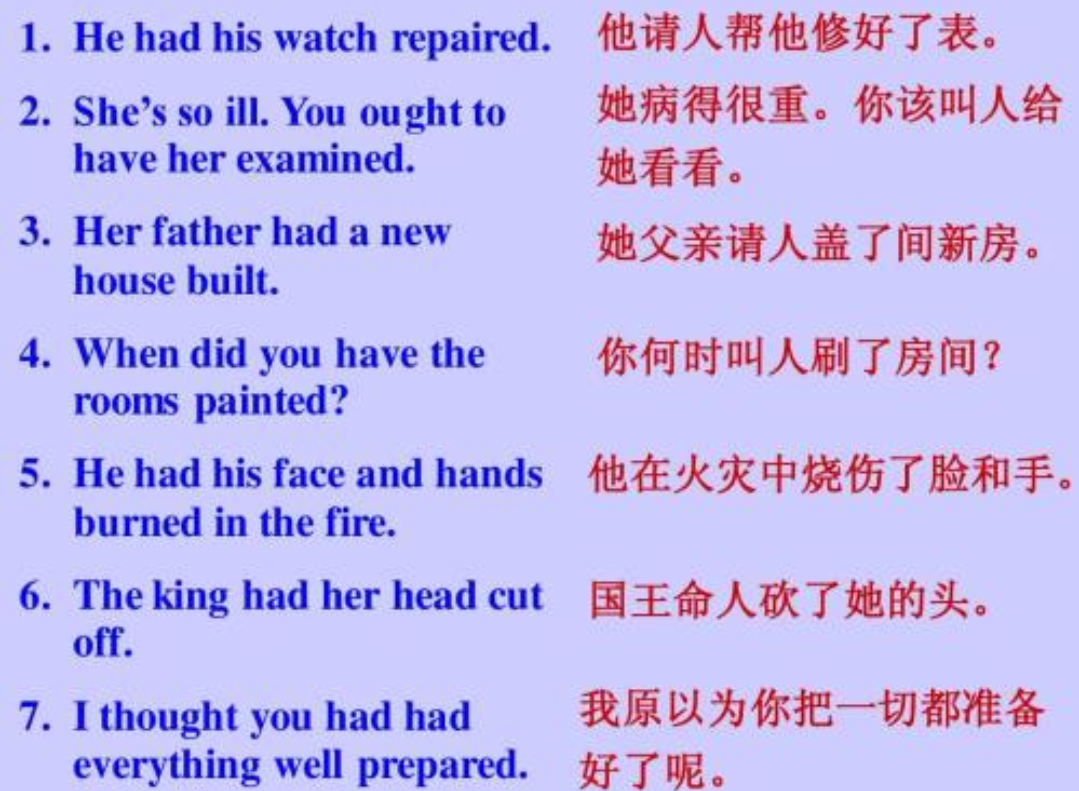英语中的感官动词有哪些?都有什么用法啊
的有关信息介绍如下:(A)感官动词(及物动词)有:
see/notice/look at/watch/observe/listen to/hear/feel(Vt)/taste(Vt)/smell(Vt)
(B)连缀动词(含感官不及物动词)
be/get/become/feel/look/sound/smell/taste/keep/stay/seem/ appear/grow/turn/prove/remain/go/run
1.感官动词表示人的感官举措,可作完好及物动词或不完好及物动词,如:listen to(听),hear(闻声),see(看见),watch(观看),feel (觉得)等。
Darling, did you hear something?
敬爱的,你听到什么了吗?
Have you heard the news?
你听到这消息了吗?
感官动词 heard作完好及物动词。
2.感官动词作不完好及物动词时,后接宾语,再接原形不定词或分词作宾语补语。
But I really heard someone steal.
但我真闻声有人在偷东西。
I heard her sing.
我闻声她唱歌。
感官动词后接原形不定词夸大理想。
I heard someone opening the cabinet.
我闻声有人在开柜子。
I heard her singing.
我闻声有人在唱歌。
感官动词后接如今分词夸大举措正在中止。
3.当see,hear表示在一较短工夫段"反覆见到、听到"的意义时,可用于中止式。
But I am definitely hearing several times.
但我的确听到了好几次。
Something is wrong with my eyes. I'm seeing double.
我的眼睛有缺陷了,我看东西是双影。
4.感官动词表示被动含义时,不能用于中止时态;感官动词表示主动含义可以用于中止式。hear, see普通辨别以其相应意义的介系词动词 listen to,look at的中止式来替换。
I feel some fruit juices on the soles of my feet.
我觉得到我脚底有果汁。
I feel a pin in it somewhere.
我觉得到这里什么地方有一根针。
表示被动含义。
I am feeling a pain in my tooth.
我觉得牙痛。
I'm feeling the fur coat.
我在摸这件毛皮大衣。
表示主动含义。
5. 感官动词的被动语态的宾语补语用不定词或如今分词。
Someone was heard to open the cabinet by us.
我们听到有人开柜子。
She was heard to sing in the concert.
人们听到她在音乐会上演唱。
不定词夸大理想。
She was heard singing last night.
有人听到她今天晚上在唱歌。

扩展资料:
1. 属于及物动词的感官动词后面可以跟三种宾语, 如:
1)简单宾语
Can you hear me? 能听到我说话吗?
He is watching TV. 他正看电视。
2)复合宾语
I listened to him go away. 我听着他走开。
I saw him getting on the bus. 我看到他正上公共汽车。
3)宾语从句
I feel that what the informant says may well be true. 我认为那个提供消息的人说的可能是真的。
Please see who's knocking. 去看看谁在敲门。
2. 不及物的感官系动词常用作系动词,其表语的特点是用形容词充当,如:
The cloth feels soft. 这块布摸上去很柔软。
Roses smell sweet. 玫瑰发出香气。
That argument sounds reasonable. 这个观点听起来有道理。
It tastes bitter. 这东西吃起来很苦。
The cake eats crisp. 这点心吃起来酥脆。



